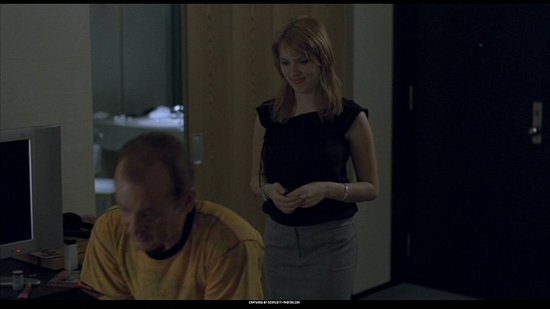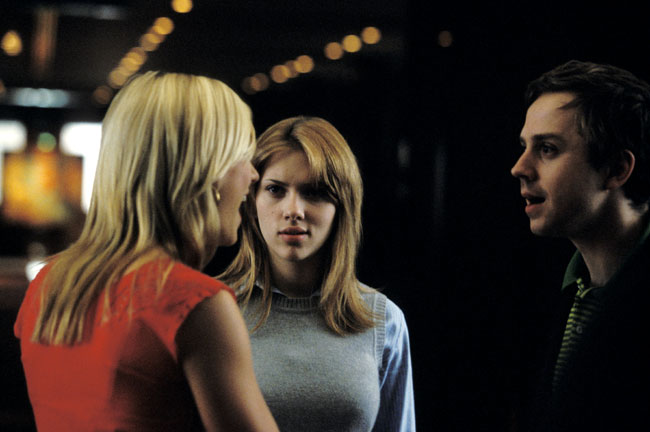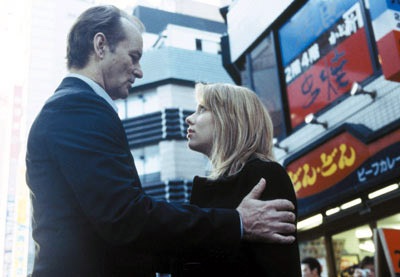Author's Note: The Essay was Written and Posted at Epinions.com on 9/21/08 to Celebrate the Fifth Anniversary of My First Viewing of Lost in Translation, in which I believed to be the best film ever made.
Lost on Earth & In Need of Translation
With American cinema nearing the end of the first decade of the 21st Century, it's clear that for anyone looking for an alternative from the big, mega-blockbusters of Hollywood. They turned to the auteurs that re-defined American cinema as something as interesting and unique as new worlds were explored. Coming from the post-Quentin Tarantino of independent cinema were new voices like Paul Thomas Anderson, Wes Anderson, David O. Russell, Alexander Payne, Brad Anderson, David Fincher, David Gordon Green, and Spike Jonze. Another director coming out of this new wave of American cinema is Sofia Coppola. The granddaughter of famed music composer Carmine Coppola and the daughter of reknowned filmmaker Francis Ford Coppola.
Coming from a family of artists and people in the film industry that includes cousins Nicholas Cage, Jason Schwartzman, and Robert Carmine along with her aunt Talia Shire, mother/documentarian Eleanor, and brother Roman. Sofia Coppola redefined the theme of alienation from a new perspective of young women dealing with new environments, adolescents, and life in transition. Starting with 1989's short segment Life Without Zoe for the anthology feature film New York Stories that was directed by Francis Ford Coppola, along with shorts directed by Martin Scorsese, and Woody Allen. Written by Francis and Sofia, Life Without Zoe tells the story of a rich young girl who is surrounded in an adult world through parental neglect. While it was the most maligned segment of the film, it carried themes that Sofia Coppola would tell in her later films.
Part of Coppola's transition in her own life through her young adult life was her trying to explore things. Something that she felt every young women goes through from one phase to another. In her second feature film Lost in Translation, there's a scene where Bob Harris (Bill Murray) and Charlotte (Scarlett Johansson) are lying in bed side-by-side where Charlotte contemplates her lack of direction. She had just graduated from Yale studying philosophy yet has no idea what to do with her degree or with her life. She mentions going through a photography phase and then attempting to write. Yet, Bob tells her that she'll figure it out and keep writing.
In the early 90s, following her maligned-performance in The Godfather, Pt. III where she took over for Winona Ryder at the last minute. Sofia went through a modeling phase, did some photography, went into fashion, and started a short-lived TV project with friend Zoe Cassavetes. Yet, it would be the discovery of Jeffrey Eugenides' novel The Virgin Suicides about five young girls dealing with their adolescence as they live in a strict household desperate to connect with young boys. Told in the perspective of one of the boys who live in their suburban neighborhood. Desperate to turn the story into a film, she wrote a script with help from her father to turn it into a film.
Before Sofia directed her 1999 feature film debut with The Virgin Suicides, she had directed a few music videos for Walt Mink and the Flaming Lips while also directing two shorts. Bed, Bath, & Beyond in 1996 and Lick the Stars in 1998. The latter told the story of a young girl in middle school who is popular while her best friend is cast out. Yet, when the popular girl creates a statement that is misinterpreted, she is immediately cast out. Lick the Stars would be the predecessor of what is to come from Sofia in her exploration of alienation from the mind of young women. The Virgin Suicides premiered in film festivals in 1999 and a year later, got a theatrical release to rave reviews. Around the same time, Coppola's personal life with husband and director Spike Jonze, who was coming off his own breakthrough with his 1999 feature film debut Being John Malkovich, was starting to unravel through closed doors.
During that period, Sofia Coppola had a fashion line that was popular in Japan. Yet, her visit included a period of jet lag, depression, and wonderment. Yet, this experience along with her own personal life would be the inspiration for her second feature film Lost in Translation. The story of an aging actor named Bob Harris whose best days are behind him goes to Japan to shoot a whiskey commercial for $2 million while endorsing it. Yet, his own life is unraveling as he forgets his son's birthday while his marriage has lost its sense of passion. Meanwhile, a young woman named Charlotte is dealing with her own marriage being lost as her photographer husband goes off to work while is dealing with the unique world of Japan as she tries to find herself. Yet, Bob and Charlotte would meet through jet lag, depression, and confusion as they share their feelings of confusion and frustration.
The film is a study of two people in transition as the troubles in their personal life and ambitions bring them together in a world that's extremely foreign to them. Inspired by the films of alienation by revered Italian auteur Michelangelo Antonioni and the dreamy romanticism of Hong Kong director Wong Kar-Wai. Coppola goes for mood instead of gimmicks or stylized cutting and presentation of the Hollywood films of that time. With its sharp, shading color and hand-held camera work of cinematographer Lance Acord, the layered sound design of Richard Beggs, and the slow yet methodical pacing by editor Sarah Flack. It's a film that engages the viewer in giving them a world, whether they've been to Tokyo or not, that is very foreign and also overwhelming.
While the film's technical work that includes notable work from production work from K.K. Barrett and Anne Ross along with Nancy Steiner's costume design. Sofia Coppola also brought back one of alternative rock's unsung heroes back to the forefront in My Bloody Valentine guitarist Kevin Shields. Shields, who had not released new original music since 1991's landmark album Loveless, had been on-and-off experimenting and collaborating in other people's project. With the help of music supervisor Brian Reitzell and Roger Joseph Manning Jr., Shields' contributions to the film helped emphasize its dream-like mood with acts like Squarepusher, Sebastian Tellier, Air, Death in Vegas, and the Jesus & Mary Chain contributing cuts. The film's music and soundtrack is an ode to the shoegaze music scene of the early 90s as well as playing to the emotions of its characters and their situations.
The four tracks Shields contributes to the soundtrack along with Sometimes from MBV's Loveless album play to the loneliness and confusion of Charlotte's character. Yet, music also plays a positive part where Bob Harris sings Roxy Music's More Than This during a kareoke sequence. Harris' voice is filled with emotion as his attraction to the young Charlotte is becoming evident where they connect in a big way. The scene along with a scene of Bob and Charlotte smoking a cigarette is followed by a wonderfully edited, shot, and sound mixed sequence of the Tokyo highway, bridges, and streets to the tune of Sometimes. The emotion and longing for sleep comes arrive with Bob carrying a sleeping Charlotte to her room in a platonic way. That series of scenes and sequences are perfectly executed led by Sofia Coppola's subtle, restrained approach to drama.
Coppola's direction and script definitely underplay a lot of what goes on in the emotional front while a lot of the film is based on life experiences and such. Though some might feel that the supporting characters of John (Giovanni Ribisi) and Kelly (Anna Faris) are caricatures along with a slew of Japanese characters. In a way, it could be true but it's too easy to say that. While John might be based on Spike Jonze and Kelly, rumored to be based on Cameron Diaz. Coppola was revealing painfully about what happened to her failed marriage though she isn't suggesting that John had an affair with Kelly. Yet, maybe nothing did happen and Kelly was just a starlet who was more likeable and energetic to the more introspective yet snobbish Charlotte.
There was an accusation of racism about the Japanese characters and how they were treated on the film. Audiences may be missing the point since Japan is extremely foreign and their tastes in comparison to Americans are very different. It's not fair to say that the Japanese have a sense of excitement and huge smiling personality since not all of them are like that. Bob Harris' encounter with a TV Japanese talk show host is only there for amusement as Harris is bewildered by appearing on the show. Yet, overwhelmed by the sense of culture shock and revealing the dirty laundry of his passionless marriage leads him to having a one-night stand with a singer at the hotel. Yet, the character of Bob Harris is a man confused at where he's at while filled with frustration in both his personal and professional life.
Bill Murray's performance of Bob Harris is wonderfully understated as the legendary comedy-actor goes for a performance that was thought to be unseen. Known as a comedy actor coming out of the TV show Saturday Night Live and hit comedies like Caddyshack, Ghostbusters, and Stripes. Murray's career by the 90s was going through a transition as he mixed comedy and drama in films like Groundhog Day and Wild Things. Yet, it was the films of Wes Anderson like 1998's Rushmore and 2001's The Royal Tenenbaums that gave Murray a new career as a dramatic actor. With Lost in Translation, Murray's sharp, sarcastic, dead-pan sense of humor mixed in with regret and confusion. Murray's approach to under-dramatize his character and make him engaging and funny proves his talents as he won several awards while getting an Oscar nomination for Best Actor for his role.
Matching Murray in the performance front is Scarlett Johansson. Only 17 when she acted in the film back in 2002, Johansson was a promising actress coming off of such acclaimed films as Manny & Lo, Robert Redford's The Horse Whisperer, Terry Zwigoff's Ghost World, An American Rhapsody, and the Coen Brothers' The Man Who Wasn't There. Her minimalist, subtle, and entrancing performance as Charlotte is often considered to be her finest work that was matched even more months later in the film adaptation of Girl with a Pearl Earring. Though there were criticism for the fact that she didn't do much, the fact that she didn't do any kind of overacting or melodramatic is what set her apart from her acting peers at the time. Winning a British Academy Award for Best Actress that year along with several nominations including 2 Golden Globe nods for Best Actress in different categories for comedy and drama for both Lost in Translation and Girl with a Pearl Earring. Johansson was catapulted to stardom despite the fact that she never gained the same acclaim or promise she had in 2003.
Five years since its release, Lost in Translation is still a favorite among some film buffs though its acclaim has diminished somewhat like other films. Yet, it remains Sofia Coppola's best work though her follow-up film, a revisionist bio-pic on Marie Antoinette, received mixed reviews in its 2006 release. While Sofia Coppola's take on period films and 18th Century dramas did wow some audiences, the film did at least prove that the director is a unique visionary who won't repeat herself though will venture into the same themes that she has visited. Another part of Sofia's genius is in Lost in Translation's much-discussed ending about what Bob Harris whispered into an emotional Charlotte's ear. To this day, it has not been revealed as it remains one of the most discussed and beloved endings in cinema.
Lost in Translation is not a film for everyone. It's not for anyone looking for pop-culture, savvy dialogue. Not for audiences looking for a conventional romance with lots of skin or anything that has a familiar plot. It's also not a film that mainstream audiences would want, especially in the traditional happy ending. Yet, those are the reasons why Lost in Translation is a great film and definitely one of the best films ever made. It's a film that defies expectations, explores themes of alienation and identity, and for those lost souls feeling disconnected by the world. This is a film that connects them in such a way that it could be done with such style and emotion through the mind and heart of its unique visionary, Sofia Coppola.
Related: LiT: 10 Reasons - 10 Things I Want to See in a Criterion UHD 4K Blu-Ray for Lost in Translation
© thevoid99 2010







No comments:
Post a Comment